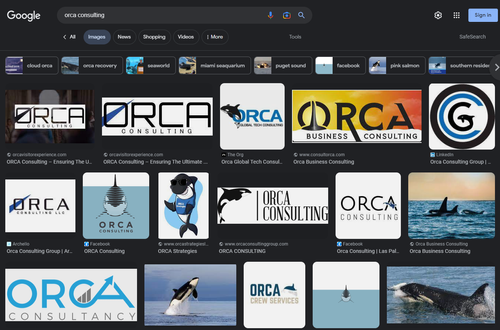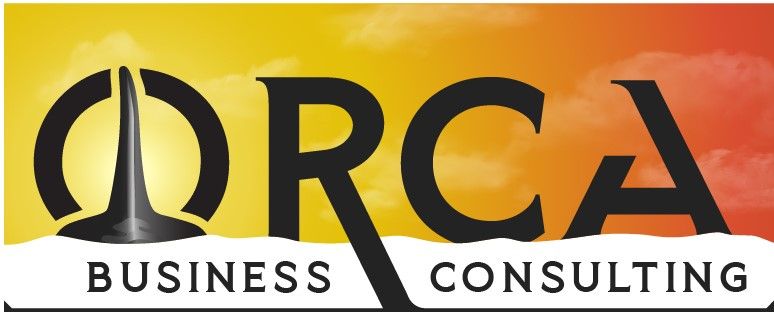Brand colors and website design is going to be more important than ever as online search becomes more and more visual. Here's how you can give your business an edge over your competition!
Why Brand Colors & Web Site Design Are More Important Than Ever
Rachel LaFollette
Have you noticed that Google organic search results are no longer just text? Google has started displaying favicons & images from websites to the left & right of some organic search results.
Seeing favicons to the left of each search result seems to be consistent, but I’ve only seen the images to the right being pulled for certain search queries related to industries that are particularly graphical or image-related (like “wedding photographer” or “event venue”). In most cases it seems as though the most prominent image on the home page is the one being displayed to the right.
My guess is that eventually Google will start displaying a preview of the referenced web page as the actual search result. Or perhaps Google will offer a preview of the web page when you mouse over each search result. This will mean you don’t have to click into each link to see the page. This will save Google users time & effort when trying to decide what product or service to purchase. Unfortunately it will mean fewer visitors for websites.
It also makes your brand colors & website design more important than ever! More about why below.
Business owners also need to think about how their brand shows up visually in comparison to their competitors when their target market searches for their products or services on platforms like Instagram & FaceBook. Younger generations, who grew up on Social Media, will and already do use social platforms to find the products and services they want instead of utilizing a Search Engine like Google.
So what’s a business owner to do? Well, a few things.
With regard to your brand colors and logo:
1. Choose brand colors that contrast or at least don’t blend in with the color palettes your competitors are using.
Do this by putting your top 10-20 competitors’ logos side by side to each other so you can see them all together. This will help you identify common themes. You can then come up with a color palette that both represents your brand well and stands out against the competition.

I’ll give you an example from my own business. When I founded Orca and started working on my brand colors and logo, I did a Google Image search for “Orca Consulting”. What came up was almost exclusively brands using blue, black and white in their branding. I therefore decided to use yellow & orange. Now when you do a search for “Orca Consulting”, your eye is immediately drawn to my logo.
2. Give your logo lots of color.
Avoid wispy logos. By that I mean logos that are nothing but very delicate text against a white background. It’s hard to stand out if your logo is primarily white.
3. Make sure the images your brand uses (like product photography and social media images) stand out against your competitors’ images and have a consistent look and feel. If possible, include your logo or other identifying elements in each image.
Do an image search on Google for your top product or service. You can also do the same on Instagram. Look to see what comes up & figure out how you can create visual assets that catch peoples’ attention.
With regard to website design:
1. Invest in how your website looks & functions. Hire a professional. Make sure they can deliver a visually appealing and consistent representation of your brand.
2. Pay attention to what is above the fold (what you see before you start scrolling) on each page. Especially your home page!
3. Make sure the images on your website are high quality, tell a story, and are engaging.

For example, let's say you own a business that sells custom cutting boards. This image of a child's hands baking cookies is much more appealing than the same image without the child's hands. Seeing the child's hands in the photo elevates this image from a product photo to a story. (Photo credit of Shannon McTighe Photography)
4. Use your top navigation to communicate your brand messaging, such as value proposition, product or service offerings and differentiators.
There’s only so much space above the fold on any given web page. You can also assume that site visitors will land on various inner pages of your website (the home page isn’t always the first page new visitors will see). Displaying & linking to more information about your business in the top navigation guarantees that no matter what page visitors land on, they will have access to those critical elements.
For example, let’s say that your primary differentiators are that you have been in business for 50 years, your custom manufacturing process, and your speed of delivery. Instead of just having an “About” page, create unique landing pages on your website called, “Celebrating 50 Years”, “Excellence in Manufacturing” and “Fastest Delivery in the Industry”. Then include those three pages in a dropdown under the “About” link in your top navigation. Build interesting & extensive content (including supporting images) on each page.
I hope this info helps you and your business! If I can help your business with brand development or website optimization, please reach out!
